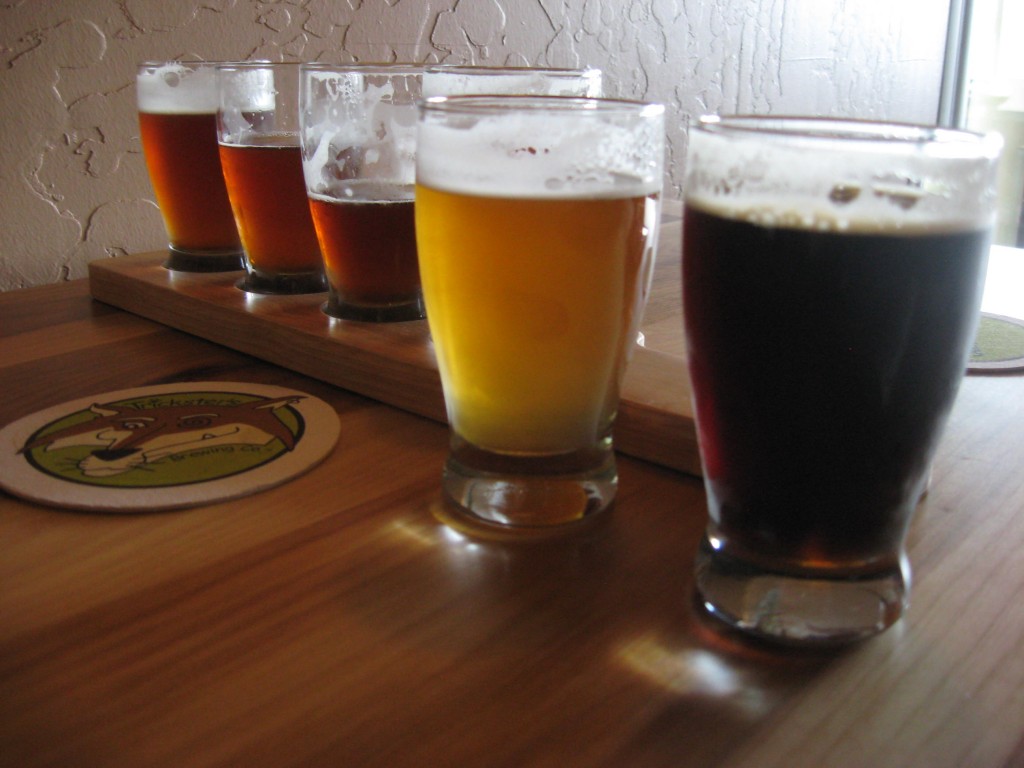Written by Christina Murphy, Amy Garner, Zach Yanowitz, Nicole Nolan, Sophie Unterman, Stephanie Chen, Sam Abramowitz and Jamie Norwood for thehullabaloo.com
 New Orleans’ relationship with beer
New Orleans’ relationship with beer
For a city so stereotypically associated with alcohol, New Orleans isn’t particularly known for its beer culture. In the 19th century, however, that was not the case. New Orleans was the beer capital of the South with more than 30 breweries. But during the last 200 years, New Orleans beer culture has dwindled. Dixie was the last remaining large-volume brewery within city limits, before it stopped production in New Orleans after Hurricane Katrina. In a 2008 Brewers Association census, Louisiana was ranked 50 out of 51 U.S. states and territories in breweries per capita – a statistic that Jeremy Labadie, beer aficionado and author of the Beer Buddha blog, calls “staggering.”
Prohibition and the rise of huge national brands took a toll on New Orleans breweries. Only in recent history has craft beer resurrected the city’s beer heritage. Abita launched in 1986 and has dominated the Louisiana beer scene ever since. During the last few years, however, more and more craft beers have shown up on local taps. A married couple developed Lazy Magnolia beer in their Kiln, Miss. home in the early 2000s, and their Southern Pecan brew evolved into the unofficial craft beer of Mississippi. New Orleans Lagers and Ales, or NOLA Brewing Co., became the only brewery in New Orleans when the company was established in 2008, releasing its first beers in March 2009. Covington’s Heiner Brau microbrewery opened in 2005, and with NOLA Brewery’s founding, a trend began. In 2009, the Louisiana craft beer movement reached Cajun country with the creation of Parish Brewing in Lafayette and Bayou Teche in Arnaudville, La.
Want to read more? Please click…


 The newly christened Underground Arts space in the Wolf Building on Callowhill is hardly a new idea. Philly is blessed with countless alternative, even illegal, venues that cater to the up-and-coming, the avant-garde and the experimental in art, but, combine that with multiple craft beer taps and you’ve got a full-on Philadelphia boner. The 12,000-square-foot space contains a theater with stadium seating, an open stage area for the intimate, beatnik fare and a giant bar with room for hundreds to dance—and it’s not even finished being built yet! The mission statement of the place—“To provide an outlet for … struggling artists to have their voices heard … and be able to make their livings from their artâ€â€”makes us want to throw our arms around the whole place and squeeze. In the future, they plan on hosting exhibitions by sculptors, installation artists, videographers and the like in a full-on gallery space. As long as they keep pouring the frosty cold stuff, we’ll show up.
The newly christened Underground Arts space in the Wolf Building on Callowhill is hardly a new idea. Philly is blessed with countless alternative, even illegal, venues that cater to the up-and-coming, the avant-garde and the experimental in art, but, combine that with multiple craft beer taps and you’ve got a full-on Philadelphia boner. The 12,000-square-foot space contains a theater with stadium seating, an open stage area for the intimate, beatnik fare and a giant bar with room for hundreds to dance—and it’s not even finished being built yet! The mission statement of the place—“To provide an outlet for … struggling artists to have their voices heard … and be able to make their livings from their artâ€â€”makes us want to throw our arms around the whole place and squeeze. In the future, they plan on hosting exhibitions by sculptors, installation artists, videographers and the like in a full-on gallery space. As long as they keep pouring the frosty cold stuff, we’ll show up. To claim that this article is a little out of date is obvious. And the Professor had to provide a picture of a different type of growler; for they come in many different styles. The article seems to focus on one type, and not even one of the better Grolsch-style of growlers that can be opened, closed, over and over again. But the article does provide an interesting perspective on growlers from a state that just legalized it a couple of years ago- PGA
To claim that this article is a little out of date is obvious. And the Professor had to provide a picture of a different type of growler; for they come in many different styles. The article seems to focus on one type, and not even one of the better Grolsch-style of growlers that can be opened, closed, over and over again. But the article does provide an interesting perspective on growlers from a state that just legalized it a couple of years ago- PGA
 In 1979 there were 44 beer breweries operating inside the United States, and the American palate was dominated by Budweiser, Pabst, and other colored water masquerading as beer. Today there are more than 1,400 breweries pumping out new chocolate stouts, double bocks, and other craft brews. Greg Beato writes for Reason that
In 1979 there were 44 beer breweries operating inside the United States, and the American palate was dominated by Budweiser, Pabst, and other colored water masquerading as beer. Today there are more than 1,400 breweries pumping out new chocolate stouts, double bocks, and other craft brews. Greg Beato writes for Reason that 
You must be logged in to post a comment.